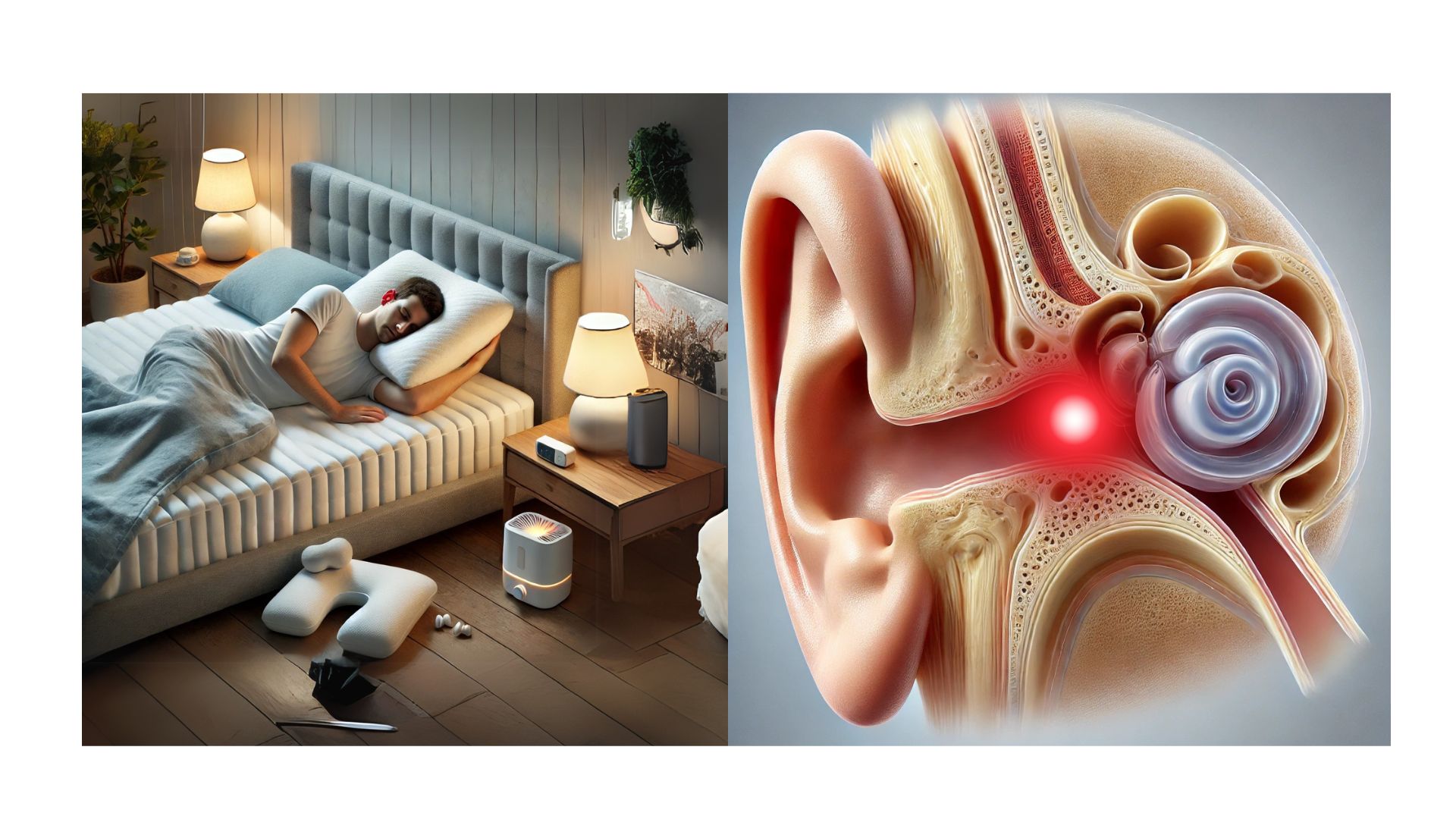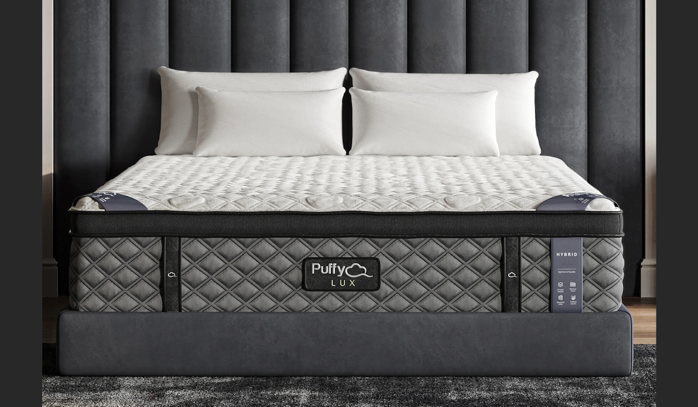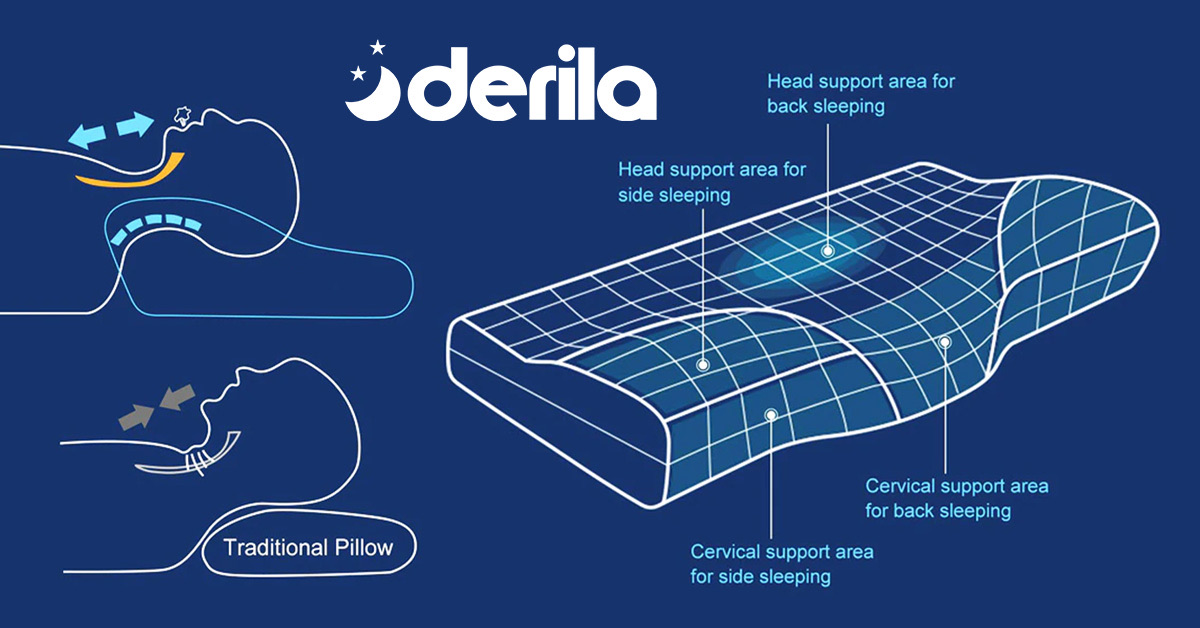
So What Side Should I Sleep On With A Ruptured Eardrum? – A Side Sleeper’s Guide to Comfort and Healing
Sleeping with a ruptured eardrum can be difficult, particularly for side sleepers. Discomfort, the risk of further irritation, and the need to promote healing require special attention to your sleeping position and environment. Let’s learn about the best side to sleep on, tips to enhance comfort, and the best products to support your recovery journey.
What Side Should I Sleep On With a Ruptured Eardrum Is Best?
When dealing with a ruptured eardrum, it’s crucial to sleep in a position that supports healing and minimizes discomfort. If you’re wondering, “What’s the best side to sleep on with a ruptured eardrum?” the answer is to keep the affected ear facing upward. This simple adjustment reduces pressure on the injured ear, prevents unnecessary irritation, and lowers the risk of fluid buildup or potential infections.
By sleeping with the ruptured ear elevated, gravity can help drain any lingering fluids, which aids in faster recovery. For instance, if your right eardrum is ruptured, lying on your left side keeps the damaged ear safe from contact with the pillow or bedding. Avoid putting pressure on the injured ear, as it could slow the healing process and worsen discomfort.
Why Sleeping Position Matters
Your sleeping position directly impacts the healing process of a ruptured eardrum. It’s essential to keep the injured ear facing upward so that gravity can aid in drainage, which is needed to reduce the risk of accumulating fluid in the ear’s canal. Additionally, sleeping on the opposite side reduces irritation caused by contact with pillows or bedding, ensuring a more restful night’s sleep.
Pillow Types for Side Sleepers
For side sleepers, it’s essential to keep your spine properly aligned. Making sure you’re reducing the number of pressure points is also important. This starts with having proper support for your neck and shoulders, especially if you’re wondering, “Which side should I sleep on with a ruptured eardrum?” The right pillow can make all the difference, ensuring comfort while protecting the affected ear.
- Adjustable Loft Pillows:
These pillows allow you to customize the height and firmness, providing personalized support. Adjustable loft pillows are particularly useful if your sleep needs change during recovery.
- Memory Foam Pillows:
Memory foam, which was discovered by NASA engineers, conforms to the shape of your head and neck. This will ensure consistent support and reduced pressure for a good night’s rest.
- Cooling Gel Pillows: Ideal for warm sleepers by providing a refreshing and cozy experience. These pillows can help regulate temperature, preventing nighttime discomfort.
-
Contour Pillows: These pillows are designed to provide proper neck and spinal alignment, reducing tension and promoting comfortable sleep.
Recommended Pillow: The Derila Pillow – An ergonomic memory foam pillow designed to provide optimal neck and spine support.
Mattress Recommendations for Side Sleepers
A medium-firm mattress is often the best choice for side sleepers because it provides a balance of support and cushioning. Look for mattresses that:
- Relieve pressure on shoulders and hips.
- Offer motion isolation, especially if you share your bed.
- Have a durable design to maintain proper alignment over time.
Choosing the right mattress ensures that your body is well-supported and that your injured ear experiences less strain, allowing for a quicker recovery. Hybrid mattresses that combine memory foam with innerspring can be particularly effective for offering targeted support and flexibility.
Recommended Mattress: Puffy Lux Mattress – Luxury hybrid mattress that combines memory foam and a plush, breathable design.

Therapeutic Sleep Solutions
To further enhance your comfort, consider these accessories. Whether you’re figuring out what side should I sleep on with a ruptured eardrum or just seeking extra relief, these tools can make a big difference:
- Heating Pads or Warm Compresses: Apply gentle heat to the area around your ear before bed to alleviate discomfort.
- Humidifiers: An arid environment can irritate your ear further. Keep the air in your room nice and adequately humid for the best results in healing.
- Aromatherapy: Use calming scents like lavender to promote relaxation.
Accessories for Side Sleepers with Ear Issues
To further enhance your comfort, consider these accessories:
- Earplugs for Sensitive Ears: Protect your ear from external irritants and noise.
- Sleep Masks with Ear Cushions: These masks provide light-blocking benefits while cushioning your ears.
- White Noise Machines: Mask background noise and help you sleep quicker and longer.
“These recommendations helped me recover without constantly waking up in discomfort. Highly recommended!” – Sarah L.
Post-Surgery Sleeping Advice
If you’ve recently undergone surgery to repair your ruptured eardrum, follow these sleeping tips for better recovery:
- Elevate Your Head: Use wedge pillows or an adjustable bed base to keep your head slightly elevated. This helps with drainage and reduces swelling.
- Keep With Consistency: Stick with a sleep schedule that will help with your overall recovery.
- Avoid Sudden Movements: Take care and avoid turning over to jar your affected ear. For those unsure which side should I sleep on with a ruptured eardrum, always position the injured ear facing up to minimize pressure and support healing.
- Create a Healing Environment: Ensure your room is dark, quiet, and at a comfortable temperature for optimal sleep quality. Investing in blackout curtains and soundproofing elements can enhance this environment.
- Use a Humidifier: Keeping the air moist can help prevent irritation and dryness in your ears and nasal passages.
- Avoid Alcohol and Caffeine Before Bed: These substances can interfere with your sleep cycle and make it harder to rest properly.
“Elevating my head and using a memory foam pillow was a game-changer. I had less pain and better sleep quality overall.” – John D.
Frequently Asked Questions (FAQs)
1. How long does it take for a ruptured eardrum to heal?
- Most ruptured eardrums heal within a few weeks, but severe cases may take months. Follow your doctor’s guidance for a smooth recovery.
2. Can I use ear drops with a ruptured eardrum?
- It’s important to consult your doctor before using ear drops. Some medications can be harmful if the eardrum is perforated.
3. Is it safe to wear headphones with a ruptured eardrum?
- Avoid in-ear headphones, as they can worsen irritation. Over-ear headphones at a low volume may be a better option.
4. Can I clean my ears if I have a ruptured eardrum?
- Do not insert cotton swabs or any objects into your ear canal. Let your ear heal naturally and follow your doctor’s advice for cleaning.
5. What symptoms indicate my ruptured eardrum is healing?
- Reduced pain, diminished ringing, and decreased drainage are positive signs. If symptoms persist or worsen, consult a healthcare professional.
6. Can I exercise with a ruptured eardrum?
- Light exercise is usually fine, but avoid activities that put pressure on your ears, such as swimming or weightlifting.
7. How do I know if my ruptured eardrum is getting worse?
- Increased pain, persistent ringing, or fluid discharge could indicate complications. Consult your doctor if symptoms worsen.
8. Can a ruptured eardrum cause long-term hearing loss?
- Most cases heal without permanent damage, but severe ruptures or infections may lead to long-term issues. Follow your doctor’s recommendations for optimal healing.
9. What foods help speed up healing?
- A diet rich in vitamins C and E, zinc, and omega-3 fatty acids can promote tissue repair and reduce inflammation.
10. Should I avoid flying with a ruptured eardrum?
- Yes, air pressure changes can be painful and worsen the condition. Consult your doctor before flying.
11. Can stress affect ear health?
- Yes, stress can cause muscle tension and inflammation, which may exacerbate symptoms. Practicing relaxation techniques can help reduce discomfort.
12. What side should I sleep on with a ruptured eardrum for the best recovery?
- It is best to sleep with the affected ear facing up to reduce pressure, aid drainage, and minimize discomfort. This helps promote healing and prevents additional irritation.
Additional Tips for Sleeping Comfortably with a Ruptured Eardrum
- Use a Silk or Satin Pillowcase: These fabrics reduce friction against your skin and hair, minimizing irritation while you sleep.
- Avoid Sleeping in Noisy Environments: Loud noises may further irritate your healing eardrum. Consider using noise-canceling earplugs designed for comfort.
- Stay Hydrated: Dehydration can cause dryness in your nasal passages and ears, leading to discomfort. Drink plenty of fluids throughout the day.
- Practice Relaxation Techniques Before Bed: Deep breathing, meditation, or soft music can help you relax and fall asleep faster, even when experiencing discomfort.
- Limit Screen Time Before Bed: Exposure to blue light from screens can disrupt your sleep cycle, making it harder to fall asleep.
- Maintain a Cool Sleeping Environment: Keeping your room at a comfortable temperature (around 65°F) can promote better sleep quality.
Conclusion
Sleeping with a ruptured eardrum doesn’t have to be a painful or frustrating experience. Simple tweaks like picking the best sleep position, plus having the right types of pillows and mattresses, and following solid therapeutic practices, you can increase the likelihood of getting a comfortable and restorative night’s sleep. Prioritize your recovery and take advantage of these tips to sleep soundly and heal effectively.
Disclosure:This post contains affiliate links. I may earn a commission at no extra cost to you if you make a purchase through these links. Thank you for your support.

